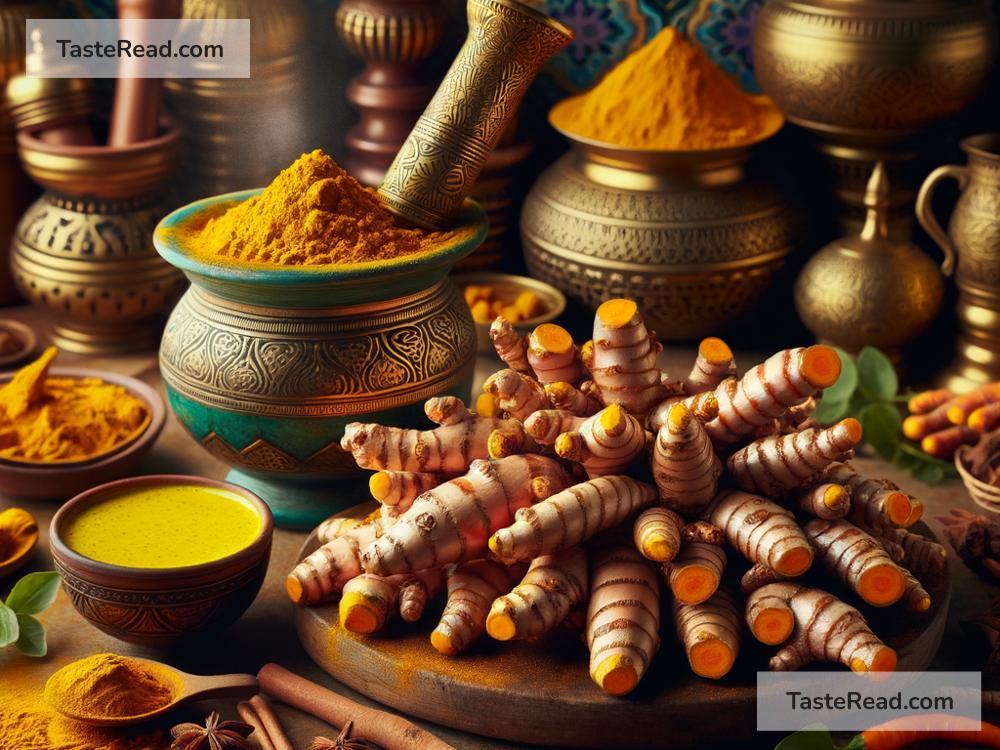The Fascinating Cultural Significance of Turmeric in India
India is a land of vibrant colors, rich traditions, and ancient wisdom. Among the treasures of this culturally diverse country, turmeric stands out as an iconic spice that holds a deep significance in Indian society. More than just an ingredient for cooking, turmeric plays a unique role in the cultural, spiritual, and medicinal practices of India. Let us explore how this humble golden-yellow root has become a symbol of health, purity, and tradition in Indian culture.
The History of Turmeric
Turmeric, known as haldi in Hindi, is believed to have been cultivated in India for thousands of years. Historical records show that turmeric has been used as far back as 4,000 years, making it one of the oldest documented spices in the world. It is derived from the root of the plant Curcuma longa, and its bright yellow color comes from a natural compound called curcumin.
The spice has long been a part of India’s culinary, medicinal, and spiritual traditions. Ancient Ayurvedic texts celebrate turmeric for its healing properties, calling it a “wonder herb” capable of treating inflammation, infections, and digestive issues. It was even considered auspicious in Hindu practices and religious rituals, solidifying its place in Indian culture.
Turmeric and Indian Cuisine
Turmeric is one of the most essential spices in Indian cooking, adding flavor, color, and nutrition to meals. Almost every Indian household uses turmeric daily in curries, lentils, vegetables, soups, and even beverages like haldi doodh, or turmeric milk. This vibrant spice gives dishes an earthy, pungent flavor and a bright yellow hue, making food look as appetizing as it tastes.
But turmeric is more than just delicious—it is also considered a powerful superfood. Packed with antioxidants, it has anti-inflammatory and immune-boosting properties. Many home remedies in India call for turmeric to treat coughs, colds, sore throats, and wounds. The spice is regarded as a symbol of health and vitality, a sentiment deeply ingrained in Indian households.
Turmeric in Traditional Medicine
The use of turmeric in Ayurveda, the ancient Indian system of medicine, dates back thousands of years. Ayurvedic healers have long praised turmeric’s ability to purify the blood, improve digestion, and enhance skin health. It has also been used to treat arthritis, wounds, and respiratory conditions.
Turmeric finds applications outside Ayurveda too—in Unani, Siddha, and other traditional systems of medicine practiced in India. It has earned global recognition as a “miracle spice” due to its health benefits, further cementing India’s reputation as the origin of many natural remedies.
In recent years, turmeric has become a popular ingredient in wellness trends around the world. Golden lattes, turmeric teas, and curcumin supplements are widely available in health stores globally. What was once a humble ingredient in Indian kitchens has now found its place on supermarket shelves across continents, thanks to India’s deep-rooted tradition of using natural herbs for healing.
Turmeric in Spiritual and Religious Practices
Turmeric is not just a medicinal spice; it is also considered sacred in Indian spirituality. Often associated with purity and protection, turmeric plays a prominent role in Hindu rituals and ceremonies. For instance, freshly ground turmeric paste is applied to deities during pujas (worship ceremonies) and is often used as a natural dye to make offerings sacred. The spice is believed to ward off negative energy and bring good fortune, which is why it is so deeply intertwined with religious practices.
Turmeric is also a major part of wedding ceremonies in India. Many weddings include a haldi ceremony, during which turmeric paste is applied to the bride and groom’s skin. This ritual is symbolic of purification, blessings, and the preparation for their new lives together. It is also known to enhance the skin’s glow, making turmeric not just spiritual but also practical.
In addition to weddings, turmeric is used during other rituals, such as housewarming ceremonies, festivals, and even funerals. It holds significance in multiple religions practiced in India, including Hinduism, Buddhism, Jainism, and Sikhism.
Turmeric as a Cultural Symbol
Turmeric has been embraced as a symbol of cultural identity in India. Its golden color is often associated with prosperity and fertility, making it an important part of auspicious occasions. In traditional Indian attire, brides often wear yellow or gold dresses for certain ceremonies, reflecting the cultural importance of turmeric’s color.
Turmeric also features prominently in India’s folk art. Bright yellow turmeric is sometimes used for creating traditional patterns during festivals like Diwali. Across rural regions of India, turmeric is used as a natural alternative to chemical dyes, showcasing its sustainable value.
The Everlasting Legacy of Turmeric
It is impossible to imagine Indian culture without turmeric. Whether it is the spice that flavors meals, the medicine that heals ailments, or the sacred paste that blesses ceremonies, turmeric has woven its way into the fabric of Indian life. Its significance goes far beyond its physical properties; it is a symbol of tradition, wellness, and spirituality. Around the world, people are beginning to recognize turmeric’s incredible value, but in India, it has always been celebrated as a gift from nature.
While turmeric’s legacy is ancient, it remains as relevant today as ever. As the world continues to discover its multifaceted benefits, turmeric serves as a reminder of India’s wisdom, culture, and connection to nature—a shining example of how simple practices can hold profound meaning.


